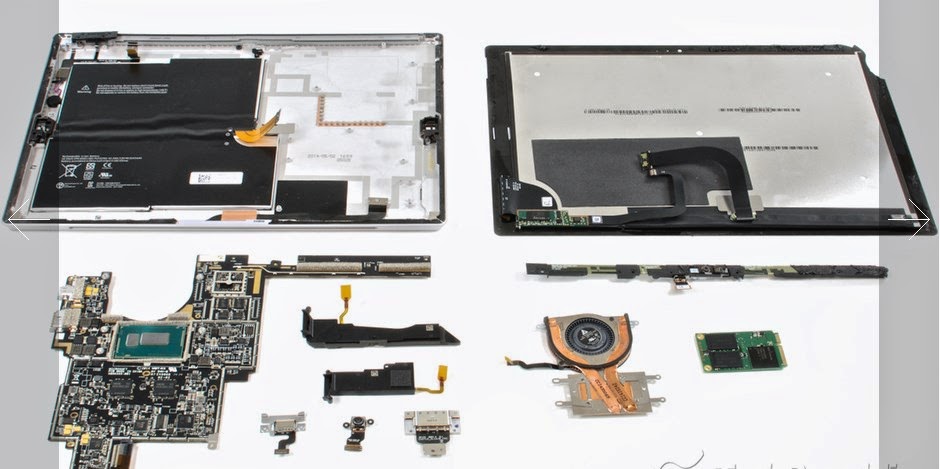Surface Pro 3 teardown reveals fragile glass, redesigned interior
Microsoft's Surface Pro 3 is a solid step up from the original Pro, but this sleek laptop replacement is still very difficult to repair.
Given its size, weight, and hardware specifications, the Surface Pro 3
is more a convertible laptop than a tablet. The 12-inch display, stereo
speakers, a microSD card slot, a full-size USB 3 port, a Mini
DisplayPort, and two 5 megapixel cameras. It comes in a variety of CPU,
RAM, and storage combinations and pricing starts at $799. At 1.76
pounds, it's heavier than your average tablet, but about the same as an
ultrathin laptop. Like last year's Pro, the Pro 3 is well-built and
feels sturdy in your hands.
- Very difficult to open the case: The display/front panel assembly is attached to the back cover with adhesive, and the only way to open the case is to remove the panel. That means breaking out the heat gun, hair dryer or other warming device and very carefully heating the edges around the actual display.
- Fragile front panel glass: Removing the front panel is a slow, tedious process and the glass covering the screen is extremely thin. I cracked one edge of the panel with just the slightest amount of pressure.
- Redesigned interior: Microsoft completely redesigned the interior of the Surface Pro 3. Where the Surface Pro had two cooling fans, the new unit has one. The reworked main system board takes up significantly less space inside the case, the battery is no longer located under the board, and there aren't any mounting plates holding component in place.
- Fewer, but still too many internal screws: Thankfully, Microsoft also used fewer screws inside the Pro 3 than than the earlier model, which has close to 100 screws. Unfortunately, there are still a lot of screws and they are all different sizes. As before, I recommend cataloging each screw's location as you remove it.
- New, flat internal connectors: Several of the connectors inside the case are a kind I haven't seen before. They are held in place with screws and have a thin wafer board between the cable's connector and the motherboard. These connectors appear to be thinner than the more common "snap style" connectors.
- Replaceable battery (sort of): The Pro's 42.2 Wh Li-ion battery isn't soldered to the motherboard and can be replaced. Unfortunately, there's so much glue holding it to the back cover, it is difficult to remove without damaging the battery. In fact, the battery is printed with the following warning "Do not separate or remove the battery from the backplate cover."







No comments
Post a Comment